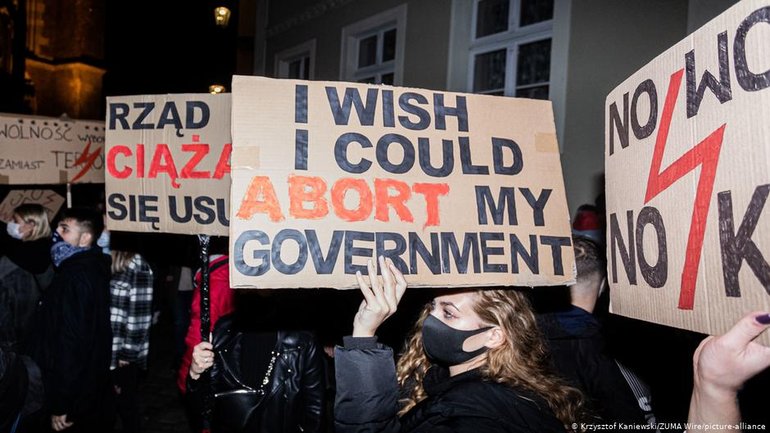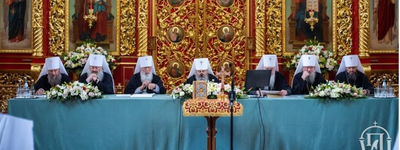Abortion in Poland: Three Lessons

Over the past two weeks, tens of thousands of demonstrators in Poland – a country that is over 90 percent Catholic – have protested against a Church-supported ruling by the Constitutional Tribunal on 22 October finding that a part of the abortion law is unconstitutional (“Poland: Protesters stage biggest abortion rights rally yet,” DW 30 October 2020). As anti-Catholic sentiment grows, obscenities are shouted in the streets, masses are interrupted, churches are vandalized, and violence breaks out. Many Catholics participate in this czarny protest (“black protest”), opposing pro-life counterdemonstrators. (John Henry Westen, “Faithful Catholics in Poland stand up to rioters trying to vandalize statues, churches,” Life Site, 30 October 2020; Rod Dreher, “The De-Catholicization of Poland,” The American Conservative 30 October 2020)
What lies behind this chaos? Some explain it simply as the work of the Devil. Be that as it may, it is useful to examine more proximate causes.
The Catholic Church regards direct abortion (that is, abortion “willed either as an end or a means”) as “gravely contrary to the moral law” (Catechism of the Catholic Church sec. 2271). Under the 1993 Polish law, abortion is permitted only where the pregnancy has been caused by a crime like rape or incest, where it threatens the mother’s life or health, or where the fetus is severely and irreversibly damaged. The law was enacted as a compromise, and it is said that most Poles support it. Attempts in recent years to tighten the law have provoked protests, and failed. In Poland, with a population of nearly 38 million, there are slightly over a thousand legal abortions per year. The recent curtailment of the law to disallow abortion in cases of fetal congenital defects – the third and most commonly invoked exception to the abortion ban -- was promoted by the ruling Law and Justice (Prawo i Sprawiedliwość) Party and supported by the Catholic bishops. Polls have indicated, however, that most Polish citizens oppose it.
One motive for the protests lies in the manner in which the law was modified. It is widely thought that the Constitutional Court is controlled by the Law and Justice Party, which has already earned international condemnation (particularly from the liberal press) for its attempted changes to the judicial system in 2017. The party, which won only 43.59 percent of the vote in last year’s parliamentary elections, is also unpopular among some Poles because of its positions on various social issues. Much of the recent anti-Catholic rancor stems from the perception that the Church hierarchy supports the Law and Justice Party. Archbishop Jędrzaszewski of Cracow, for example, is known to favor it.
But in fact, the Polish bishops, clergy and laity are divided between the “Open Church,” which seeks to find what is positive in contemporary society and includes some venerable, respected and intellectually solid journals on the one hand, and a right-wing or “conservative” movement, which operates the well-known Radio Maryja, on the other. Indeed, some bishops have openly opposed the Law and Justice Party’s positions. For example, the Primate, Archbishop Wojciech Polak, and Cardinal Kazimierz Nycz of Warsaw, have opposed its refugee policy. In 2017, Archbishop Polak and Bishop Stanisław Gądecki thanked President Andrzej Duda for vetoing the government’s 2017 attempt to refashion the judiciary. Furthermore, not even all conservatives support the ruling Party. (Filip Mazurczak, “How Catholic is Poland’s Law and Justice Party?” Catholic World Report, 21 October 2019)
Another problem with Poland’s abortion law is that it does not appear to be very effective. It is estimated that each year, Polish women have between 10,000 and 150,000 illegal abortions. Between 10% and 15% of these take place in nearby countries like Germany, Slovakia -- and Ukraine. Perhaps an international consensus on the issue, enshrined in a multilateral treaty, could address this problem.
Meanwhile, Law and Justice Party leader Jarosław Kaczyński has reportedly proposed a new compromise that would legalize abortion in the case of a lethal defect, but not in the case of a non-lethal one such as Down syndrome.
The Polish demonstrations provide three lessons for the Church. First, don’t push too hard too fast, because there will be a backlash. Catholic teaching requires a total ban on abortion, and some argue that life is so precious that all abortion must be stopped immediately. But if society vehemently rejects tightening the law, pushing for an immediate and total ban could result in the opposite: total legalization. Second, don’t become too entangled with politics. Although some prominent bishops have kept their distance from the ruling party, there is a perception that the hierarchy supports it, and this tends to discredit the Church in the eyes of many Poles. Third, prepare the groundwork. Even the 1993 compromise law, with its three exceptions to the abortion ban, is frequently circumvented. The recent demonstrations show that public opinion is not ready for total abolition. An effective campaign of information and persuasion must precede any effective anti-abortion law.
These lessons apply to Ukraine as well. According to UN statistics for 2020, Ukraine has a rate of 27.5 abortions per 1,000 women ag ed 15 to 44 (compare Russia, with the world’s highest reported rate of 53.7; the United States, at 20.8, and Canada at 15.2). In order to put an end to this barbaric practice, the Ukrainian Churches will have to proceed wisely and carefully.










